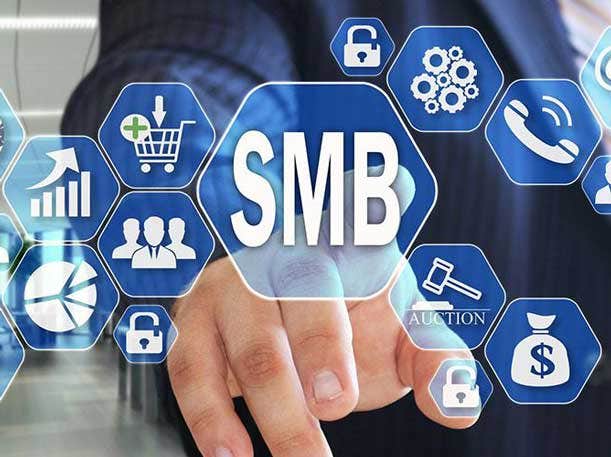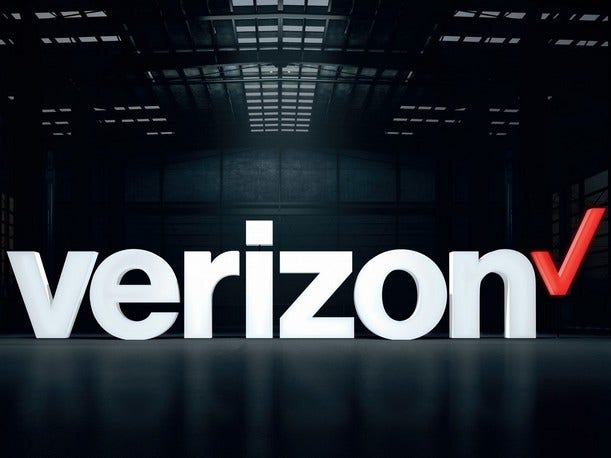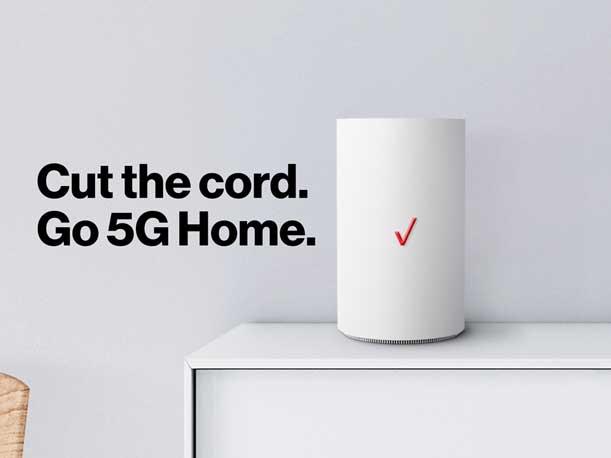Verizon Business CRO On Meeting The Needs Of SMBs And Why Partners Must ‘Push The Envelope’
‘Small-medium businesses are needing to tap into their reserves and are tightening their belts a lot more than the enterprise … they’ve got to not just keep up with the Joneses but differentiate. They’ve got to work to make sure that the customers are getting what they need and staying ahead of the macroeconomic environment. That calls out for the need the partners like Verizon, but also channel partners who are trusted to be bringing in those pieces,’ Verizon Business CRO Aparna Khurjekar tells CRN.

Enterprises aren’t the only ones seeking out bespoke technology solutions to help solve their unique challenges. Small and midsize businesses have spent the past three-plus years rapidly evolving and adopting new technology to help them connect, collaborate and stay secure, said Aparna Khurjekar, CRO of business markets and SaaS for Verizon Business.
Khurjekar, a longtime telecom leader and Verizon trailblazer for a decade, is very comfortable helping channel partners and end customers grow their business strategies and revenue. She, along with her team of more than 3,000 sales professionals, supports midmarket wireless and wireline sales while helping to guide customers through their digital transformation journeys with the help of Verizon’s partners. While SMBs have different needs than enterprises, they also require increasingly sophisticated technology solutions and channel partners can help fill the gaps, Khurjekar said.
A big proponent of the channel, CRN sat down with Khurjekar to discuss how SMBs are being disproportionately impacted by the skills gap, how emerging technologies such as AI and automation can assist them, and how they can adopt new technologies securely with the help of trusted Verizon partners specializing in managed services.
What follows are excerpts from the conversation.

How are the needs of SMBs different from enterprises?
As Verizon looks at the overall end-to-end gamut of the customers we support, one of the things that we are seeing right now that’s not surprising is there’s no one individual or one group, one team, or one company that can solve for the growing, specialized needs of businesses and we are seeing that even in the mid[market] and the small business. So, early on, the whole discussion used to be around enterprises and how they need help with that extra bespoke set of solutions. What we realized is that in small-medium businesses, especially with the adoption of technology getting more and more sophisticated and intentional in the products they’re bringing to the market, they’re bringing in some unique needs, not just by verticals, not just by size, but just by the value prop they’re bringing in. Because of that, now more than ever, across the gamut of customers we’re supporting, we’re seeing a big need for partners who are coming in across every piece of the ecosystem, starting from devices all the way through managed services, So we see the need for channel partners as an integral and indispensable part of how we serve customers across the board, and that is only going to continue to increase.
As we think about small-medium businesses, they are living in the same world as the enterprise, so they are seeing the same needs coming in from their customers, which are a little more digital, a little more personalized, seamless and convenient. That is requiring them to be thinking through their approaches very, very differently. In conjunction with that are all the macroeconomic uncertainties, which only seem to be growing. The macroeconomic environment, it’s just the hangover of COVID, followed by everything that’s happening with inflation [and] everything that’s happening through supply chain disruptions that are still persistent and consistent, and then the labor shortages and the skills that are required. It’s not just that we’re not finding labor, skilled labor is becoming a bigger need. And the cost of capital for all of that is starting to increase. That’s hitting the small-medium businesses as much as it’s hitting the enterprises, but they have less of the wherewithal in most cases to weather that. We’re already seeing through all the data and the research we’re doing that the small-medium businesses are needing to tap into their reserves and are tightening their belts a lot more than the enterprise. To survive, they’ve got to not just keep up with the Joneses but differentiate. They’ve got to work and make sure that the customers are getting what they need and they’re differentiating and keeping an edge over everybody else. They’ve got to make sure they stay ahead of the macroeconomic environment. But again, the wherewithal doesn’t come in just from a financial disadvantage, in many cases, [it’s] also the technical disadvantage. They don’t have the IT prowess; they don’t have a lot of what’s available and at the beck and call of the larger companies. That calls out the need for partners, like Verizon, with our tech experts, but also channel partners who are trusted to bring in those pieces.

What are the next big technology areas that will start impacting the SMB space?
In the backdrop of [everything] we do see a lot of sunshine coming in because entrepreneurship is growing at a breakneck speed. Just last year, there were 4 million new tax IDs that were created, and people are building and coming up with new ideas, and that is what technology is helping them with. As you think about starting a business, there are lots of things [like] AI that are starting to show up. We don’t yet know what the licensed version of a ChatGPT is going to be like, but with access to technology like AI, robotic process automation, cloud and SaaS solutions, and then most importantly, for us, broadband and everything that brings in, lots of companies have the ability to conjure up a new value proposition to make things easier for a customer. So the ideas are going to be easy to come up with. What’s going to be difficult is sustaining them and then scaling them.
What now is getting very exciting is the advent of data, AI and robotic process automation. Once you start collecting data, this is where the power of AI and the power of robotic process automation starts showing up. How do we use data to bring in the right kinds of insights so you’re targeting the right customer? What is the biggest cost for a small-medium business today outside of their product? It’s bringing in customers. How do you leverage the right kind of data and the right kinds of tools and the right kind of automation to go through that and bring stuff in? How do you do a digital presence the right way from a cost perspective? Where is it that you can use AI internally? And what I think people are not seeing is that AI [has already] been in use. The larger companies like Verizon have been leveraging AI for the longest time, especially in the last five years. Rampant use of AI to do operational efficiency, to do a lot of models, to know who, when [and] where to go to. Larger companies have had the wherewithal to do it, but for that you needed data scientists, modelers [and] you need people who could do AI and machine language programming the right way [and] that wasn’t accessible to the small- and midmarket-[business segment]. What has happened since the fourth quarter of last year is there’s this sudden awareness of our own AI, but also seemingly, there has been a sudden availability at an accessible, affordable price point. I think this is going to be the big explosion where companies like Verizon and channel partners can help companies understand how they can leverage AI to operationalize things better, but also bring to market their own products and services better.

For intimidated SMB customers that want to adopt new technologies, where is the starting point?
I think this is where there is value in connecting with a company like Verizon with its partner ecosystem. You can think about [it as a] one-stop shop. I’m not suggesting Verizon has all the answers, but Verizon has a way that we can bring in a tech expert who can do the initial assessment, and based on needs, connect you to a plethora of partners in its ecosystem for the device, for the automation, for the SaaS solution [and] for your security with our partners. This is the value of a large company that has the wherewithal that shows up. We are serving hundreds of thousands of customers of all sizes, so we know what’s working, we know what’s not working, and we bring that expertise and skill set, especially in segmenting it [down] from the enterprise. Even on security, when I have an enterprise that is running two-thirds of the IP across the world, I have immediate and very quick access to what’s happening with threat detection [and] what is the latest and greatest in technology and I can downmarket that very quickly. And it’s not just a sales one-and-done. It’s not transactional, it’s the relationship you have [with a partner] and that can then help you in big ways. This ecosystem of partners we bring in, ‘Oh, you want business internet? I am going to bring in a company that will come do the site survey, do the installation, do the setup for you and set up your firewalls the right way, and then manage it for you.’ Those are the kinds of things that we can do [when] we bring in that ecosystem. Think of it as one big Verizon with hundreds of channel partners, and we can right-size the solution for you. And last but not least, then we can grow with you. Because we’re serving all the way from a one FTE customer to hundreds of thousands of FTE customers, we can scale the right solution for you because what fits for you today is not going to work for you as you scale. And I’m hoping as [the customer] grows, we grow with them.

How can partners help their SMB customers?
In a couple of ways. No. 1 is being the adviser. To run a business, you need a great, solid value proposition and then surround it with the right people, the right processes and the right products. What they need now is the right kinds of technology and grow in a sustainable way with technology. Most of these small-medium businesses, as much as they know their business, need help in understanding where to start and where to go. Because as a starting point, maybe I need connectivity. But where they go is a lot more sophisticated over time because as they scale, they’re going to have to grow. So, in simple terms, they need somebody who comes in and assesses their current tech [environment] and where they need to go, and then starts putting in the steps towards getting them there. We have a viewpoint of technology that can be split into four Cs. [The first is] about connectivity. And we call that out first because, of course, we have the connectivity. But it’s the lifeline now, like if you’re not connected in your offices, [on] mobile, or connecting your IoT solutions, it’s a no-go. And the good news for channel partners and partners like us is it’s not one-and-done from a connectivity perspective. After connectivity, the biggest concern small-medium businesses have which can come as a surprise to a lot of people is cybersecurity. Because with technology and with everything that they have in terms of their value prop, they need to shore up their endpoints and their solution for the consumer, as well as the employees, and keep them safe. And the small-medium businesses are being targeted by cybercrimes more disproportionately now. ... The third thing they’ve got to do is collaborate with each other and make sure their customers can connect with them digitally. Once you have these three, [then it] becomes the whole cloud story. So leveraging everything that you can be doing from a SaaS perspective. There are tools now to take on your ecommerce systems and take on your marketing, and then all that needs to be done in-house to manage your personnel and manage your operations. So, being able to tell them, ‘There’s an app for that, there is a solution for that, there’s a IoT solution for that, don’t go around doing this on your own’ is very, very important.

What’s your message to Verizon partners?
We have to make sure that all of us are shifting right because as technology gets adopted, we need to now find the next gear just so that we can be building what’s next. [Things like] AI, robotic process automation and we’re making space for that by ensuring that there is more persuasive technology adoption. Because if I say today, ‘I’m going to have a tech team that is going to help people with texting,’ which by the way, 20 years ago, we had an overlay organization that helped people understand how to use SMS. It seems so foreign today. But if we hadn’t moved from there, we wouldn’t have gone into business internet. So as we talk to our channel partners, I encourage them to move right and keep pushing the envelope because that’s important for their survival [and] the survival of their customers.
Every partner brings value to the ecosystem that Verizon has built. And we want to make sure that it’s a triple win. We want the customer, the partner and Verizon to win, and we want to make sure we’re all constantly extending ourselves into what’s next. If not, if I were a partner who was still selling text, I’m not growing.